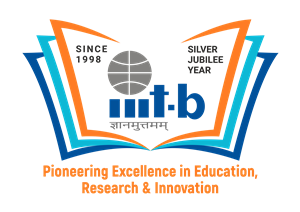5G network ushers in a new era of digital solutions for India, use of this technology provides a seamless coverage, high data rate, low latency and highly reliable communications system. One of the common myths about 5G is that this new generation network uses more energy in transmitting data and other things than the previous generation networks. However, the case is not how it is perceived. In fact, the 5G network uses optimized energy, as the antennas will work only on demand. 5G has become a new global standard for cellular technology.
Prof. Prem Singh, Assistant Professor, IIIT Bangalore not only busts the myths around 5G technology but elucidates how this new cellular technology is relevant and functional in today’s world.
There is a popular misconception that 5G is nothing but providing high data rate to mobile phone users. In fact, 5G cellular technology is designed to provide connectivity to billions of devices simultaneously with very high peak data speeds (multi-Gbps), very low delay (order of one millisecond) and very high reliability with more uniform experience, longer battery life, and deeper coverage.
Hence, with 5G, there is a shift in focus in comparison to previous generations. 5G brings a range of technologies together and focuses on industry benefits, moving the focus away from the mobile device end user. In other words, 5G provides a unified and more capable air interface, which connects virtually everyone and everything together including machines, objects, and devices. With the high data rate speeds, superior reliability and negligible delay, 5G will take cellular technology into new realms, and will impact every industry. For example, making safer transportation, remote healthcare, precision agriculture and digitized logistics.
5G in IoT and Beyond
According to the reports, there will be 22 billion connected devices worldwide by 2025. Due to low latency, high speed and expanded coverage, 5G can reach 10 times more devices per square kilometre than its 4G counterparts, providing the infrastructure and connectivity to the IoT devices which enables IoT applications for many industries with plenty of innovative IoT use cases. 5G-enabled IoT technology will provide benefits to various sectors like manufacturing, healthcare, agriculture, transportation, retail, media/advertising, water, waste management, and many more.
Benefits of 5G-enabled IoT Technology
- In Manufacturing: 5G enables large scale ‘machine to machine ‘communications, reducing human error and leading to an increase in automated processes.
- In Agriculture: 5G streamlines the farming process. For example, automatic watering, soil health checking, wireless collars on sheep to track movements, etc.
- In Healthcare: innovations such as robotic aids during surgery to increase accuracy and ambulance drones to provide real-time incident coverage could become a reality.
- In transportation: using both vehicle-to-vehicle and vehicle-to-infrastructure connections, 5G-enabled IoT innovations will change the way we navigate the road, rail, and sea.
- In Education: virtual reality headsets could see students taking a trip to Antarctica to witness the effects of global warming, or have a virtual tour of the human body, getting up close to vital organs.
5G technology operates in two frequency regimes, namely Frequency range 1 (FR1) (below 7.125 GHz) and FR2 (24.25 GHz to 52.6 GHz). Many people think that 5G is harmful due to electromagnetic field (EMF) exposure, especially in the high frequency regime. However, there is no solid proof available to support this. Also, 5G technology can operate by keeping the EMF exposure within the limit.
5G has Enhanced Security
5G offers several significant security enhancements compared to its 4G counterpart. For example, 5G is more capable of protecting user identity, a more robust encryption algorithm scrambles the traffic, and instead of specialized hardware that could be compromised, the traffic can be routed through virtual hubs and switches that can be moved or changed quickly if required. Also, 5G uses the concept of edge computing, which enables data processing much closer to the source, enabling the ability for improved threat detection, this is unlike in the traditional computing wherein the data may have to travel to a server far away.
5G is driving the global growth. As per the reports, it is already a $13.1 Trillion global economic output, and 22.8 million new jobs were created. This impact is much greater than previous cellular network generations. 5G’s full economic effect will likely be realized across the globe by 2035.
IIITB COMET Foundation on 5G and Beyond
IIITB COMET Foundation is the Technology Innovation Hub (TIH) located at IIIT Bangalore (IIITB), established under the National Mission on Interdisciplinary Cyber-Physical System (NM-ICPS), Department of Science & Technology (DST), Government of India.
IIITB COMET Foundation is actively involved in the development of a world-class ORAN (Open Radio Access Network) –massive MIMO Base-station with the collaborative effort of five academic institutes of national importance (IIT Hyderabad, IIIT Bangalore, IIT Bhilai, IIIT Naya Raipur and IIT Roorkee). The aim is to develop ORAN complaint 5G Advanced technology comprising a massive MIMO scheduler and stack (Physical layer, MAC layer, Control) that deals with a large number of users. The technology offers an integrated physical, stack, and core along with an intelligent network controller driven by cutting-edge indigenous algorithms. The project aims to indigenously develop the fundamental technology building blocks of 5G, 5G+ and 6G, and IPR generation. Also, IIITB COMET Foundation in collaboration with Amrita School of Engineering is working on the design and development of Software Defined Radio (SDR) hardware which will be capable of running advanced AI/ML-based software to meet the needs of a 5G network. The prime focus of TIH is on indigenous cutting-edge research leading to IP generation enabling not only product-oriented innovation but also target adoption into upcoming 5G advanced and 6G systems.


